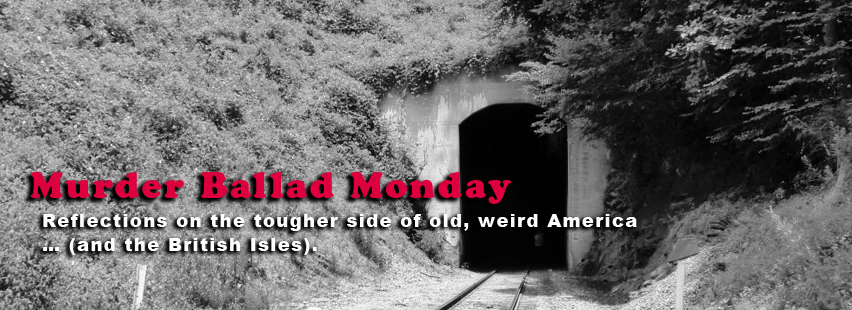Down by the Water
As Ken commented, the role of the natural world is a significant element in “Young Hunting/Henry Lee.” Nick Cave may have removed the dialogue between the woman and the bird, but his original chorus uses the howling wind and the watching bird to frame her murderous deeds. In so doing, he underscores subtly what the original lyrics make explicit: that nature is a witness to those deeds. In the original, the bird not only speaks with the woman, but also with those who search for the missing Young Hunting. When questioned, the woman swears first “by the corn” and then “by the moon” that she has not seen him (another crime against nature), and misleads them to believe that Young Hunting has drowned. They search the water in vain for his body until the little bird shows up again, telling them Young Hunting has been murdered and instructing them to search at night by floating candles in the water:
The candles shone full bright.
Young Hunting is closely related to several other Child Ballads that include similar elements: a dialogue between lovers; the promise of fine things; a betrayal; a lover murdered and thrown in the water (or murdered by being thrown into the water); a focus on the natural elements looking on; an initial denial of guilt; a search for the body in vain until nature assists with the final reveal. I know we’ll be getting to some more of those ballads in the future.
For now, to tie thoughts together, I wanted to point out how similar these elements are to those found in “Omie Wise” – the dialogue between Omie and Lewis; Lewis’s promise of fine things; Omie murdered/thrown in the water; the initial denials; the fruitless search for her body in the river and the rain; the way the river finally offers up her body to the fishing boys. In his post on “Omie Wise,” Ken questioned what the song represents for the listener and the source of its staying power. This may be one answer: it’s a familiar story and also familiar are the ways and the reasons why such a story is set to song. In our discussion of “Omie Wise,” we also looked at a range of artists who have “painted around the edges” of the song and filled in the gaps – Anna Domino’s retelling in Omie’s voice of the circumstances leading to the murder, Elvis Costello’s attempt to tell the rest of Lewis’s story, Dylan Tuccillo’s cinematic reimagining of Omie’s fate, and the story of Omie’s children, as penned by our very own Pat.
To tie things together further, I also wanted to offer another “painterly” contribution by Nick Cave. “Little Water Song,” written by Cave and performed by Ute Lemper, gives us the story of the drowned murder victim, in the victim’s voice, as she is dying and as her murderer looks on. I always think of this song as Cave’s tribute to “Omie Wise.”
as re-imagined in the 2005 musical Romance and Cigarettes:
of this scene that captures the dialogue between the lovers.)


